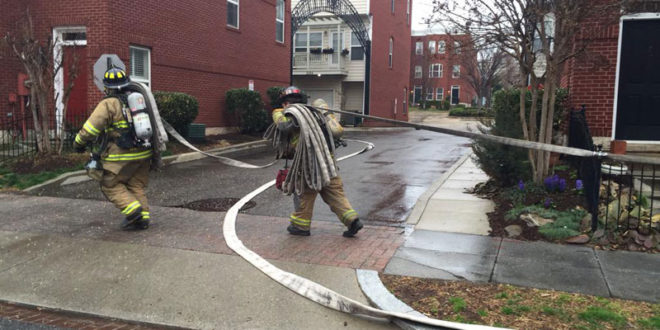Assisting Firefighters from Construction Through Demolition
Firefighters who respond to an emergency at a building with sprinkler and standpipe systems can perform their life-saving work (figure 1) with much greater efficiency if their first-responder needs have been considered by the building’s designers and code officials.
OSHA’s manual, “Fire Service Features of Buildings and Fire Protection Systems,” provides the framework for this important collaboration. Originally published in 2006, the manual was completely updated and expanded in 2015. Valuable additions for systems designers include new chapters on water supply and building phases (including construction, use, and demolition); new sections on energy conservation, emergency power, and room and floor numbering systems with firefighters’ needs in mind; and more photos to help explain the manual’s concepts that can make a significant difference when firefighters arrive on the scene.
Nineteen technical reviewers with both building and fire service experience helped make the manual timely and
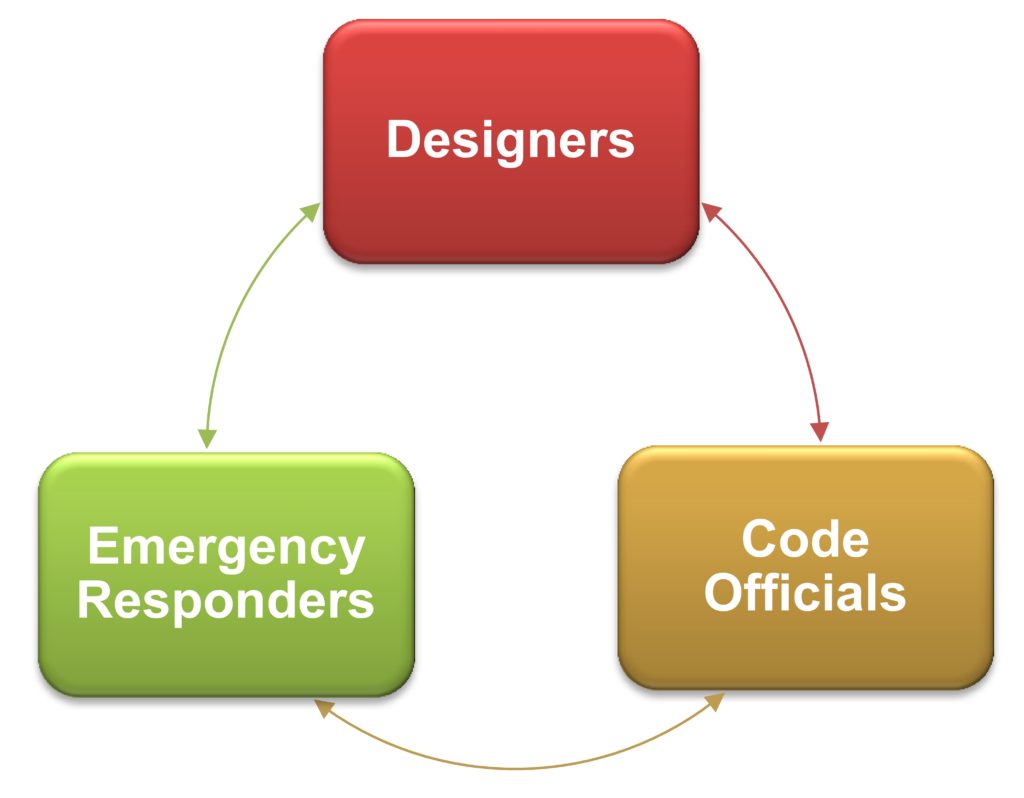
comprehensive. One of these reviewers, John Denhardt with Strickland Fire Protection, stated “This manual makes the designer think how sprinkler and standpipe systems impact the responding fire department personnel. Many times a few simple, straightforward design changes can make a huge difference during a fire emergency. This manual should be a mandatory read for every designer in our business.”
Here are some concepts in the revised manual that sprinkler and standpipe designers should consider during various phases of a building’s lifetime:
Make Communication Your S.O.P.
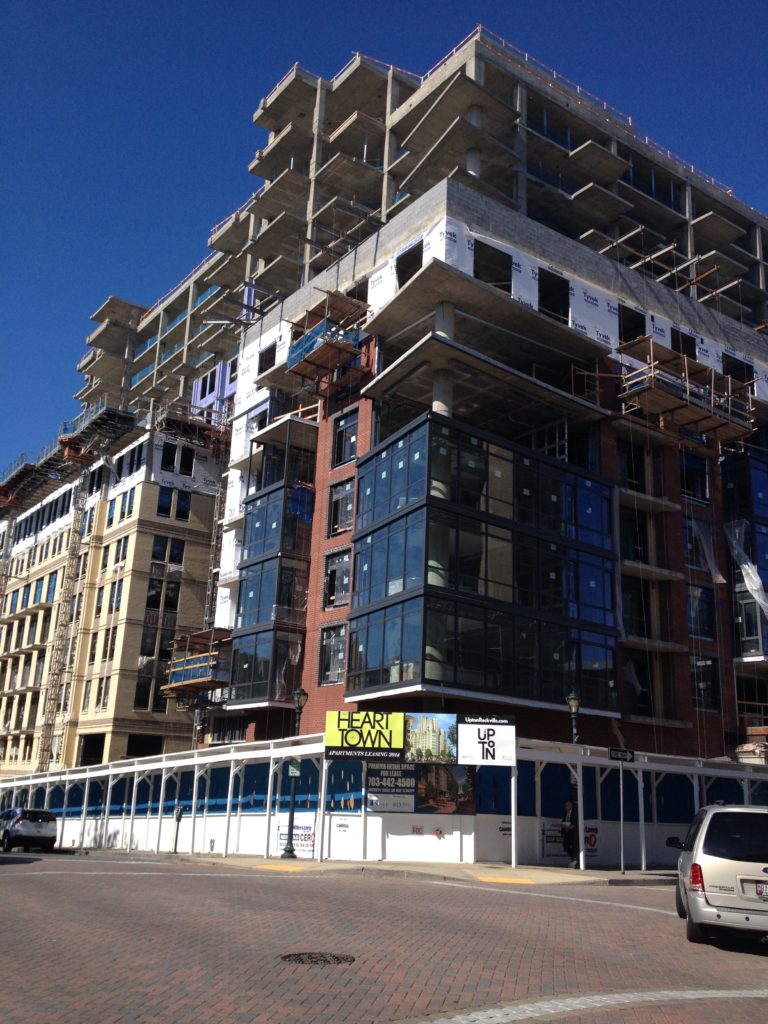
The first, and perhaps most important concept, is communication. When all stakeholders communicate their needs and desires, projects proceed more smoothly and efficiently – especially if the communication is clear and starts early. When communication includes responding firefighters, their needs can be considered effectively and thoroughly (figure 2).
Sprinkler and standpipe designers should also coordinate with other trades early so that changes can be made before installation. Coordination is important, for example, when sprinkler systems activate fire alarm and smoke control systems. Clear and sensible zoning helps arriving firefighters locate the alarm source quickly.
Install Temporary Standpipe as Building Rises
One of the most important fire service features in tall buildings under construction is a temporary standpipe with a fire department connection (FDC). Without such a system, firefighters would need to stretch long hose lines up stairs or over ladders. In buildings beyond the reach of fire service ladders, stairs would be the only hose stretch option. This is labor-intensive and time-consuming (figure 1). The temporary standpipe must rise with the building and remain in service, so coordination with overall construction progress is important (figure 3). With proper planning, much or all of the temporary piping can remain as part of the permanent system.
Plan Easy Access for Personnel and Equipment
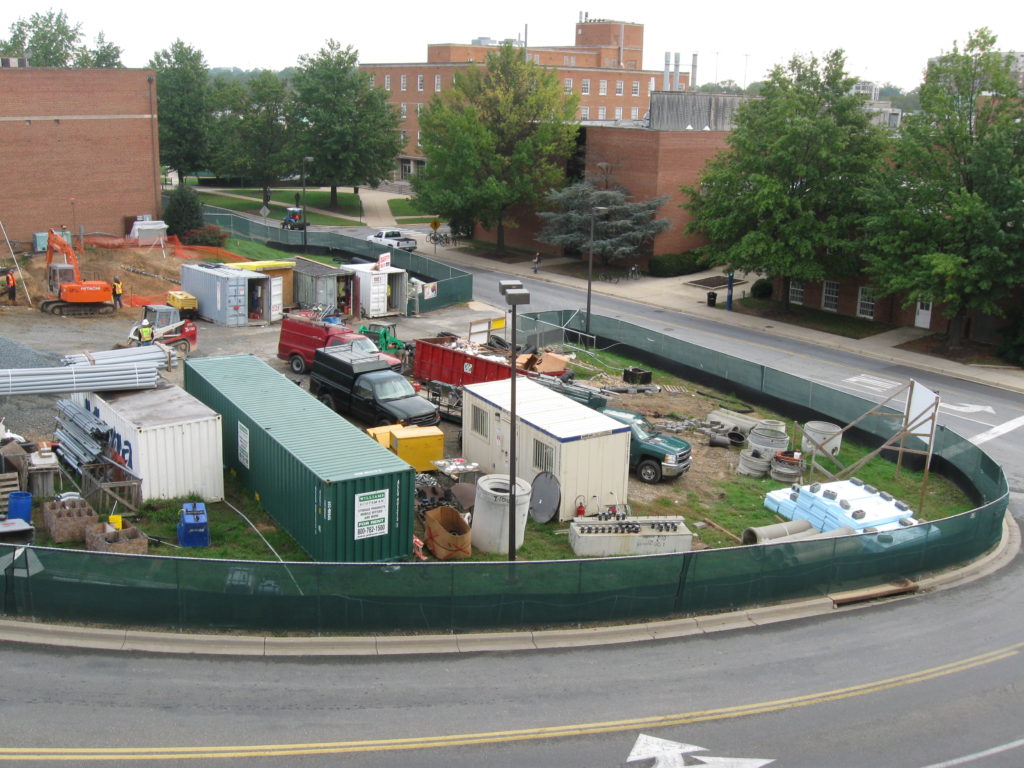
Access for firefighters and fire apparatus is also vital. All contractors and vendors on a job site can contribute to this by keeping roads, access points, and stairways marked and unobstructed. Building plans and hazardous material information belong in a secure location that is easily accessible to firefighters (figure 4).
Figure 4. A construction site entrance showing good fire apparatus access and the trailers containing information on the building and site hazards. Photo by author.
Reduce Responses with Precautions
Control of hazards and routine safety precautions will minimize the need for fire service responses during sprinkler and standpipe installation, renovation, or retrofit work. In addition to the obvious advantage for worker safety, firefighter safety increases when responses decrease. Minimizing responses also keeps firefighters available for other emergencies.
Plan for Occupancy Phases
Advance planning of sprinkler and standpipe protection can help with occupancy considerations, especially in
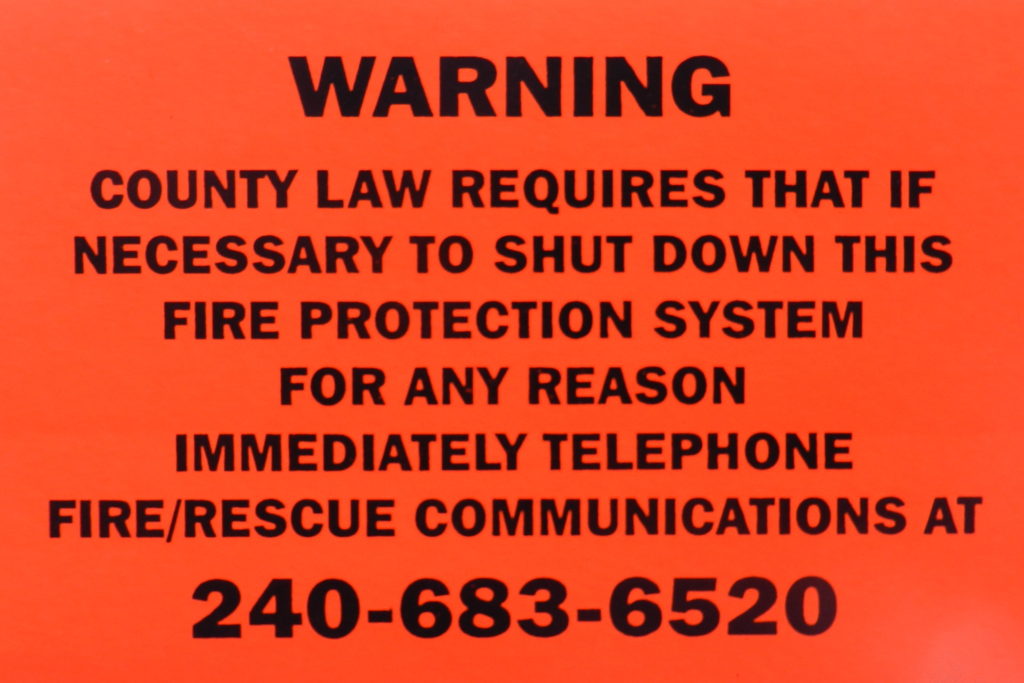
speculative buildings. Typically, partial occupancy can be dependent on in-service fire protection systems. Careful Location and properly phased installation of features such as pumps, feed mains, and valves can facilitate flexibility regarding partial occupancy. Similar considerations will avoid problems during tenant renovations. Remember that modifications to zones will likely trigger companion changes to fire alarm zoning and annunciation.
Keep the Fire Service Informed
Once installed and approved, fire protection systems are no help while they are out of service. Preventive inspection and maintenance programs help minimize outages. When systems must be removed from service (such as for renovations or repair), impairment programs that keep responders informed (figure 5) help them plan for appropriate actions during outages. For example, rather than wasting time connecting to an out-of-service FDC, firefighters can use an ordinary standpipe fire hose connection as an inlet. Sometimes temporary features will also help compensate for impairments – such as a temporary hose supply from a fire hydrant to an FDC during an underground feed outage.
Help with Pre-Incident Planning
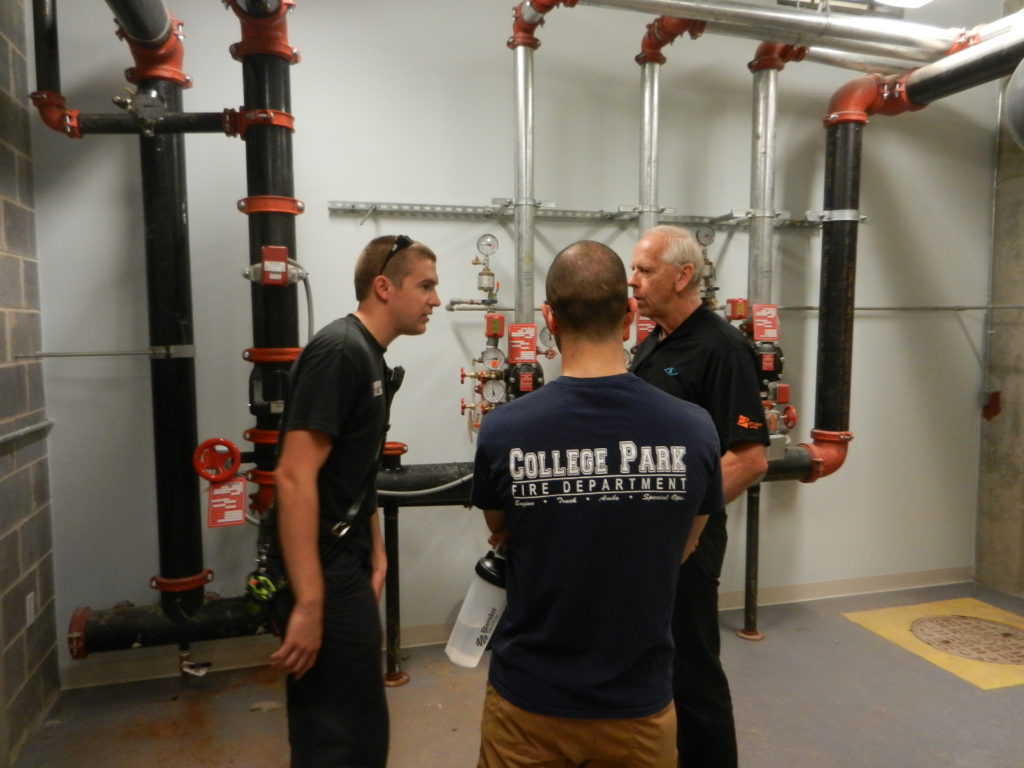
Pre-incident planning is the process by which firefighters learn about how buildings are built, what they contain, how they are occupied, and if they are protected in any way. Nonexistent or incomplete pre-incident planning has been cited in many reports of firefighter line-of-duty deaths. Contractors and code officials should contribute to this planning process by sharing information on systems and involving firefighters in acceptance tests and demonstrations (figure 6).
Conclusion
Sprinkler and standpipe system designers are well-versed in coordinating with code authorities and building owners. OSHA’s manual demonstrates that these stakeholders should also consider the needs of firefighters who we depend on to respond to incidents in buildings with sprinkler and standpipe systems. As the manual indicates, it is to be used as a voluntary companion to local, state, or federal requirements or preferences.
One of the OSHA manual’s reviewers, Samuel S. Dannaway, P.E., President and Chief Fire Protection Engineer of S.S. Dannaway Associates, Inc. stated that the updated manual is “well written, covers essentially everything, and has great accompanying photographs.” The Fire Service Primer chapter will familiarize you with the challenges that firefighters face, including the need to make quick decisions with inadequate information in stressful, time-sensitive environments. Then check out the chapters on water supply, sprinkler and standpipe systems, FDCs, and building phases.
Links to pdf, e-book, and mobile application formats are available in the “Highlights” box on OSHA’s Fire Safety page: www.osha.gov/SLTC/firesafety. You might also want to look back at the author’s August 2009 article “Coordinating Sprinkler and Standpipe System Design.“ It contains checklists for sprinkler & standpipe designers to help facilitate fire service operations. See http://digital.turn-page.com/i/2135-august-2009.
About the Author: Mat Chibbaro is the deputy fire marshal for the National Institutes of Health in Bethesda, Maryland. While previously working for the OSHA National Office, he authored the OSHA manual referenced in this article. Chibbaro is a licensed professional fire protection engineer in both California and Maryland, has 35 years of experience in fire code application and enforcement, and has served 42 years in the fire and rescue service (primarily with the College Park Volunteer Fire Department in Prince George’s County, Maryland).
 Sprinkler Age A Publication of the American Fire Sprinkler Association
Sprinkler Age A Publication of the American Fire Sprinkler Association
